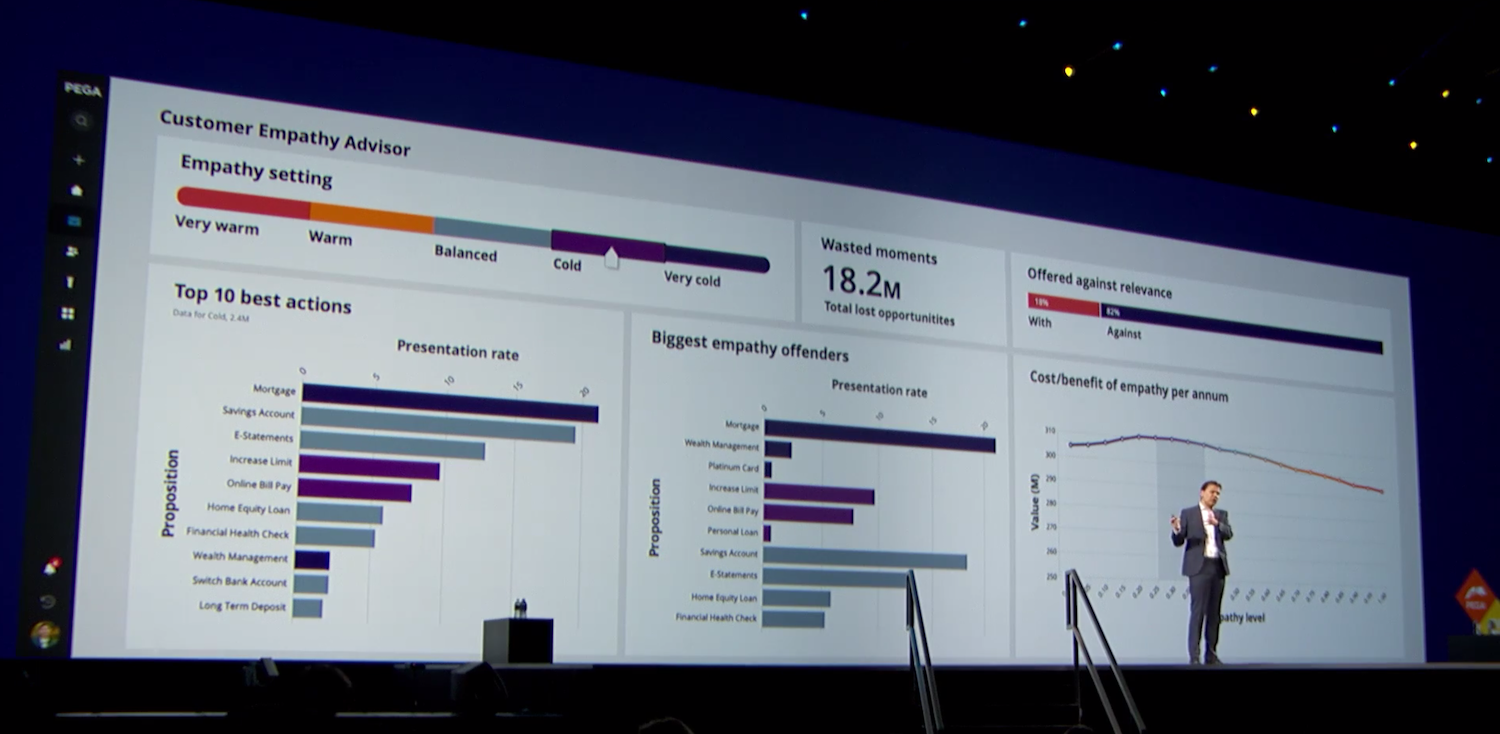
The good, the bad and the ugly of customer service – Interview with Tom Libretto of Pega
June 20, 2019
Becoming more empathetic can be hard. Pega’s new AI-powered Customer Empathy Advisor aims to help – Interview with Rob Walker of Pega
June 27, 2019This is a guest post by Ralph Wunsch who is working as a web publishing consultant for Writebrain, a blog analytics tool.
It is often said that a way to someone’s heart is through their stomach. While this old proverb may seem specific to cooking, it’s actually a metaphor for giving someone a pleasant experience that warms their heart.
In this case, working your way to someone’s “stomach” is a good advice, especially to those whose job is to create meaningful experiences that touch your customers’ hearts.
“The way to a customer’s heart is much more than a loyalty program,” said Valeria Maltoni, a renowned strategist that helps organizations tell their story and create better customer experiences.
Maltoni also added “Making customer evangelists is about creating experiences worth talking about.” And it’s true: complicated “loyalty” programs that benefit only the seller could even be the cause of negative customer experiences.
In the age of the consumer, it’s not enough to have an innovative product. You need to have carefully designed customer experiences that trigger positive emotional responses to have the edge over the competition.
Why Emotional Triggers Matter in the Age of the Consumer
Jim Blasingame accurately describes the shift of power from the seller to the buyer in his book The Age of the Customer: Prepare for the Moment of Relevance. He says that the way to success is no longer just about being competitive, but also about being relevant to your target customers.
And there’s recent evidence to support Blasingame’s theory. A 2015 study showed that there’s a strong connection between a brand’s reputation and its “emotional connection score” – or how many of its customers associate the brand with a certain emotion.
This focus on delivering personalized customer experiences matters now more than ever to businesses. Human emotion plays a major role in building an exceptional CX, and making use of emotional triggers to evoke certain emotions is one of the most effective ways of building an exceptional customer experience.
But what are these emotional triggers and how can you apply them to your business? Read on to learn five emotional triggers that are essential to improving your customer experience, as well as some real-life examples on how you can apply them on your own business.
1. Belonging
The adage “No man is an island” isn’t timeless for nothing. Maslow’s hierarchy of needs classifies man’s feeling of belonging as one of the strongest human emotions. This is why a lot of companies take pride in being a “family” to establish this bond that motivates its employees.
In customer experience, a good example of this emotional trigger can be seen in HP’s latest holiday ad, which tells a heartwarming story of two sisters who rediscovered the true meaning of the holidays.
The advertisement subtly promotes their product, but it’s clear that its focus is on evoking the spirit of belonging, so their customers can associate that positive emotion with their brand.
2. Anger
Anger is an emotional trigger that is best used when you want your target customers to take immediate action, usually for a cause.
One recent example that used anger to provoke people into action is the movement to defend net neutrality. Popular websites like Kickstarter, Netflix, and Twitter, among many others, displayed messages educating people about net neutrality and encouraging them to act.
Many of them displayed the “spinning wheel of death” in dark and bold colors like red and yellow. This helped stir people’s anger, resulting in over 2 million emails and phone calls made to Congress to overturn the FCC’s plan to censor the Internet.

3. Competition
Many people derive gratification in being competitive, as it motivates them to do better because they have a record to beat.
That’s why many companies encourage friendly competition at the office as one of the ways to motivate employees to perform better and improve the company culture.
In customer experience, brands use gamification as a means of stirring the competitive spirit among people and motivate them to use products that could make them look better or think smarter than their peers.
4. Guilt
Guilt is one of the emotions that we all dislike but is admittedly effective in spurring us into action. It makes us feel bad, but when we act to free ourselves from guilt, it often leads to a positive outcome for ourselves and others.
That said, many consumers don’t like being guilt-tripped, so showing an easy way to “redeem” themselves can make this emotional trigger much more effective.
For inspiration on how to incorporate guilt into your customer experience the right way, check out the case study below on how V/Line, an Australian train company, promoted guilt trips (literally) to increase ticket sales by 12%.
5. Trust
Trust is always earned, never given. Without trust, there’d be no customers who would even consider trying your business.
Unlike guilt-tripping, trust is an emotional trigger that all business should incorporate into their customer experience. It takes a long time to build trust, but once you’ve earned it, you would’ve turned your regular customers into proactive brand ambassadors.
This emotional trigger can be seen in the copy of a website: are you transparent with your customers? Does your interface let them know exactly what information you collect? Or does it sound indifferent?
Conclusion
In the digital age, it takes more than loyalty programs to deliver the satisfaction that your customers want. Nowadays, successful businesses rely on emotional triggers to deliver a well-crafted and personalized customer experience that makes their brand more memorable.
Keep these emotional triggers in mind when designing a customer experience that makes an impact on your customers.
..
This is a guest post by Ralph Wunsch who is working as a web publishing consultant for Writebrain, a blog analytics tool.
..
Author Bio:
 Ralph Wunsch is working as a web publishing consultant for Writebrain, a blog analytics tool. He is currently based in South Africa. He has amassed a wealth of knowledge in online publishing and blogging from his experience in online media management. His other interests include business, media, and pop culture.
Ralph Wunsch is working as a web publishing consultant for Writebrain, a blog analytics tool. He is currently based in South Africa. He has amassed a wealth of knowledge in online publishing and blogging from his experience in online media management. His other interests include business, media, and pop culture.
..
Thanks to Pixabay for the image.




